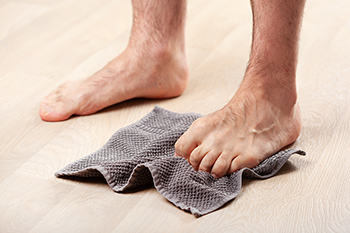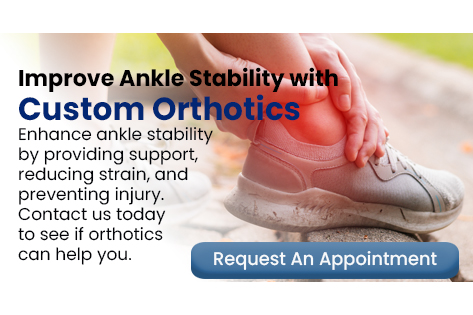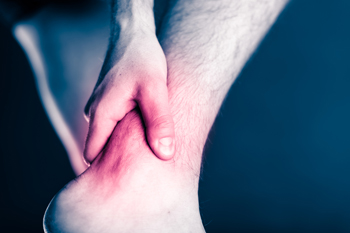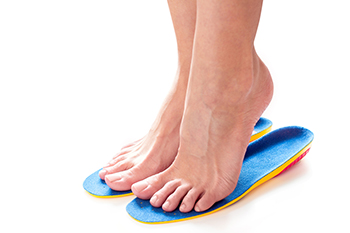Blog
Items filtered by date: October 2025
Stop Your Toenail Fungus
What Is a Plantar Wart?

A plantar wart is a small growth on the bottom of the foot caused by the human papillomavirus, or HPV, entering through tiny cuts or weak spots in the skin. These warts often develop on weight-bearing areas, such as the heel or ball of the foot, which can make them painful while walking or standing. The pressure pushes the wart inward, creating discomfort and tenderness. A podiatrist can accurately diagnose plantar warts, remove them safely, and provide treatment to prevent recurrence. If you notice a painful spot or thickened skin on your foot, it is suggested that you promptly schedule an appointment with a podiatrist for an accurate diagnosis and effective treatment for plantar warts.
Plantar warts can be very uncomfortable. If you need your feet checked, contact Timothy Gauldin, DPM from Toe-tal Foot Care. Our practitioner will assist you with all of your foot and ankle needs.
About Plantar Warts
Plantar warts are the result of HPV, or human papillomavirus, getting into open wounds on the feet. They are mostly found on the heels or balls of the feet.
While plantar warts are generally harmless, those experiencing excessive pain or those suffering from diabetes or a compromised immune system require immediate medical care. Plantar warts are easily diagnosed, usually through scraping off a bit of rough skin or by getting a biopsy.
Symptoms
- Lesions on the bottom of your feet, usually rough and grainy
- Hard or thick callused spots
- Wart seeds, which are small clotted blood vessels that look like little black spots
- Pain, discomfort, or tenderness of your feet when walking or standing
Treatment
- Freezing
- Electric tool removal
- Laser Treatment
- Topical Creams (prescription only)
- Over-the-counter medications
To help prevent developing plantar warts, avoid walking barefoot over abrasive surfaces that can cause cuts or wounds for HPV to get into. Avoiding direct contact with other warts, as well as not picking or rubbing existing warts, can help prevent the further spread of plantar warts. However, if you think you have developed plantar warts, speak to your podiatrist. He or she can diagnose the warts on your feet and recommend the appropriate treatment options.
If you have any questions, please feel free to contact our office located in Hot Springs, AR . We offer the newest diagnostic and treatment technologies for all your foot care needs.
Foot Exercises to Relieve Plantar Fasciitis Pain

Plantar fasciitis is inflammation of the thick band of tissue that supports the arch of the foot, often causing heel pain. Gentle stretching and strengthening exercises can reduce discomfort and promote healing. A calf stretch is done by standing facing a wall, placing one foot behind the other, and leaning forward to stretch the back calf. A calf stretch on a step involves lowering your heels off the edge of a step to lengthen the calf muscles. Additionally, the towel scrunch strengthens the arch by pulling a towel toward you with your toes, and marble pick-ups train foot control by lifting marbles with your toes. Plantar fasciitis can be painful, and may cause difficulty in completing daily tasks. If you have heel pain,, it is suggested that you consult a podiatrist who can diagnose the problem and offer you relief and treatment solutions, which may include targeted exercises.
Exercising your feet regularly with the proper foot wear is a great way to prevent injuries and build strength. If you have any concerns about your feet, contact Timothy Gauldin, DPM from Toe-tal Foot Care. Our practitioner can provide the care you need to keep you pain-free and on your feet.
Exercise for Your Feet
Exercise for your feet can help you gain strength, mobility and flexibility in your feet. They say that strengthening your feet can be just as rewarding as strengthening another part of the body. Your feet are very important, and we often forget about them in our daily tasks. But it is because of our feet that are we able to get going and do what we need to. For those of us fortunate enough to not have any foot problems, it is an important gesture to take care of them to ensure good health in the long run.
Some foot health exercises can include ankle pumps, tip-toeing, toe rises, lifting off the floor doing reps and sets, and flexing the toes. It is best to speak with Our practitioner to determine an appropriate regimen for your needs. Everyone’s needs and bodies are different, and the activities required to maintain strength in the feet vary from individual to individual.
Once you get into a routine of doing regular exercise, you may notice a difference in your feet and how strong they may become.
If you have any questions, please feel free to contact our office located in Hot Springs, AR . We offer the newest diagnostic and treatment technologies for all your foot care needs.
Custom Orthotics For Ankle Stability

Step with assurance, thanks to enhanced ankle stability from orthotics! If you're active and on the move, Custom Orthotics are your ally for stronger, steadier ankles. They align your foot and ankle, reducing the risk of sprains and offering solid support for every stride. Don’t let instability hold you back. Try Custom Orthotics from our office, and discover unshakable confidence in every step!
Ankle Popping and How to Strengthen Your Ankles

Ankle popping can occur for several reasons, including crepitus, which is the grinding or crackling sound from joint surfaces, or the harmless release of gas bubbles within joint fluid. It may also result from tendons moving over bone or past injuries that have weakened the joint. Strengthening exercises such as calf raises, resistance band stretches, and balance training can improve stability and reduce popping. A podiatrist can assess whether ankle popping is normal or a sign of an underlying condition, provide targeted exercise plans, and recommend treatments, if necessary. If ankle popping is accompanied by pain or instability, it is suggested that you schedule a visit with a podiatrist to restore strength, improve mobility, and protect your ankle health.
Ankle pain can be caused by a number of problems and may be potentially serious. If you have ankle pain, consult with Timothy Gauldin, DPM from Toe-tal Foot Care. Our practitioner will assess your condition and provide you with quality foot and ankle treatment.
Ankle pain is any condition that causes pain in the ankle. Due to the fact that the ankle consists of tendons, muscles, bones, and ligaments, ankle pain can come from a number of different conditions.
Causes
The most common causes of ankle pain include:
- Types of arthritis (rheumatoid, osteoarthritis, and gout)
- Ankle sprains
- Broken ankles
- Achilles tendonitis
- Achilles tendon rupture
- Stress fractures
- Bursitis
- Tarsal tunnel syndrome
- Plantar fasciitis
Symptoms
Symptoms of ankle injury vary based upon the condition. Pain may include general pain and discomfort, swelling, aching, redness, bruising, burning or stabbing sensations, and/or loss of sensation.
Diagnosis
Due to the wide variety of potential causes of ankle pain, podiatrists will utilize a number of different methods to properly diagnose ankle pain. This can include asking for personal and family medical histories and of any recent injuries. Further diagnosis may include sensation tests, a physical examination, and potentially x-rays or other imaging tests.
Treatment
Just as the range of causes varies widely, so do treatments. Some more common treatments are rest, ice packs, keeping pressure off the foot, orthotics and braces, medication for inflammation and pain, and surgery.
If you have any questions please feel free to contact our office located in Hot Springs, AR . We offer the newest diagnostic tools and technology to treat your foot and ankle needs.
When a Baby Has an Ingrown Toenail

Babies can develop ingrown toenails when the corner of the nail grows into the surrounding skin, often affecting the big toe. Because infant nails are soft and flexible, they may sometimes appear ingrown when they are only curving at the edges. Signs of a true ingrown toenail include redness, swelling, tenderness, and, in some cases, drainage of fluid near the nail. Causes of ingrown toenails include nails being trimmed too short, rounded edges that grow into the skin, or pressure from tight shoes once the baby begins walking. If ignored, an ingrown toenail may lead to infection, making the toe more painful and swollen. A podiatrist can determine if the nail is truly ingrown and provide treatment to ease discomfort, prevent infection, and guide parents on proper nail care as their child grows. If your child develops an ingrown toenail, it is suggested that you promptly schedule an appointment with a podiatrist for an exam and treatment solutions.
Ingrown toenails can become painful if they are not treated properly. For more information about ingrown toenails, contact Timothy Gauldin, DPM of Toe-tal Foot Care. Our practitioner can provide the care you need to keep you pain-free and on your feet.
Ingrown Toenails
Ingrown toenails occur when a toenail grows sideways into the bed of the nail, causing pain, swelling, and possibly infection.
Causes
- Bacterial infections
- Improper nail cutting such as cutting it too short or not straight across
- Trauma to the toe, such as stubbing, which causes the nail to grow back irregularly
- Ill-fitting shoes that bunch the toes too close together
- Genetic predisposition
Prevention
Because ingrown toenails are not something found outside of shoe-wearing cultures, going barefoot as often as possible will decrease the likeliness of developing ingrown toenails. Wearing proper fitting shoes and using proper cutting techniques will also help decrease your risk of developing ingrown toenails.
Treatment
Ingrown toenails are a very treatable foot condition. In minor cases, soaking the affected area in salt or antibacterial soaps will not only help with the ingrown nail itself, but also help prevent any infections from occurring. In more severe cases, surgery is an option. In either case, speaking to your podiatrist about this condition will help you get a better understanding of specific treatment options that are right for you.
If you have any questions, please feel free to contact our office located in Hot Springs, AR . We offer the newest diagnostic and treatment technologies for all your foot care needs.
Orthotic Support for Foot and Ankle Conditions

Orthotic interventions are often a key part of conservative treatment for foot and ankle problems, helping patients regain comfort and mobility during recovery. Custom orthotics provide stability, improve alignment, and redistribute pressure, which can reduce pain and prevent further injury. Conditions such as plantar fasciitis, flatfoot, arthritis, and tendon disorders frequently respond well to this type of support. By addressing underlying biomechanical issues, orthotics not only ease symptoms but also promote more efficient movement patterns during recovery. They can be combined with stretching, strengthening, and targeted exercises to maximize functional outcomes. For athletes and active individuals, orthotics may also support a safe return to activity by protecting the foot from repetitive strain. If you are recovering from a foot or ankle condition and continue to struggle with pain or instability, it is suggested that you consult a podiatrist to explore whether orthotic support may improve your recovery process.
If you are experiencing discomfort in your feet and would like to try custom orthotics, contact Timothy Gauldin, DPM from Toe-tal Foot Care. Our practitioner can provide the care you need to keep you pain-free and on your feet.
What Are Custom Orthotics?
Custom orthotics are inserts you can place into your shoes to help with a variety of foot problems such as flat feet or foot pain. Orthotics provide relief and comfort for minor foot and heel pain.
Over-the-Counter Inserts
Shoe inserts come in a wide variety and are used to treat foot pain, heel pain, and minor problems. For example, arch supports can be inserted into your shoes to help correct overarched or flat feet, while gel insoles are often used because they provide comfort and relief from foot and heel pain by alleviating pressure.
Prescription Orthotics
If over-the-counter inserts don’t work for you or if you have a more severe foot concern, it is possible to have your podiatrist prescribe custom orthotics. These high-quality, custom inserts are designed to treat problems such as abnormal motion, plantar fasciitis, and severe forms of heel pain. They can even be used to help patients suffering from diabetes by treating foot ulcers and painful calluses and are usually molded to your feet individually, which allows them to provide full support and comfort.
If you're experiencing minor to severe foot or heel pain, it’s recommended to speak with your podiatrist about the possibility of using custom orthotics or shoe inserts. A podiatrist can determine which type of custom orthotic or shoe insert is right for you and help you take the first steps toward being pain-free.
If you have any questions, please feel free to contact our office located in Hot Springs, AR . We offer the newest diagnostic and treatment technologies for all your foot care needs.

